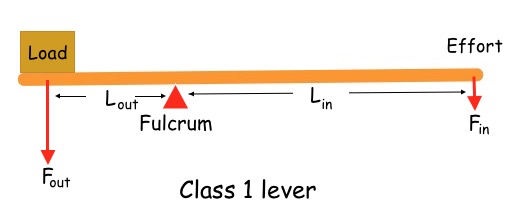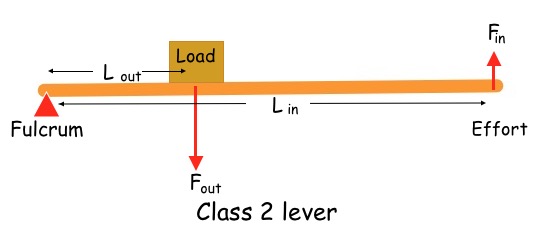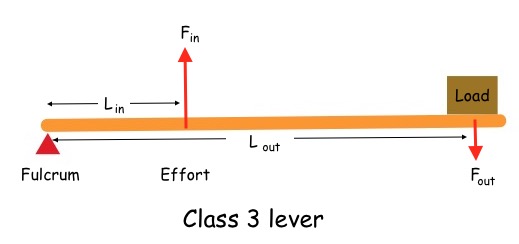Lever
A lever is a simple machine consisting of a beam or rigid rod pivoted at a fixed hinge, or fulcrum.




Class 1: Fulcrum between the effort and resistance: the effort is applied on one side of the fulcrum and the resistance (or load) on the other side, for example, a seesaw, a crowbar or a pair of scissors. Mechanical advantage may be greater than, less than, or equal to 1.

Resistance (or load) between the effort and fulcrum: the effort is applied on one side of the resistance and the fulcrum is located on the other side, and the mechanical advantage is always greater than one. It is also called force multiplier lever.

Effort between the fulcrum and resistance: the resistance (or load) is on one side of the effort and the fulcrum is located on the other side. The effort arm is smaller than the load arm. Mechanical advantage is always less than 1. It is also called speed multiplier lever.
`sumτ = F_(out)L_(out) - F_(i n)L_(i n)= 0`
`=>`
`F_(out)L_(out) = F_(i n)L_(i n)`
`F_(out)/F_(i n) = L_(i n) / L_(out) = IMA`
IMA of Lever:
`IMA = L_(i n) / L_(out)`
